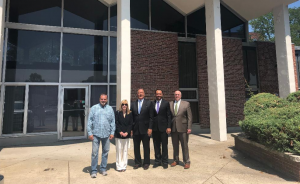Real Estate Developments That Affect Commercial Properties


The shifting demographics of the U.S. workforce have played a significant role in the many changes that have occurred during the last decade. A smaller working-age population base will have an impact on commercial real estate demand as the Baby Boomer demographic ages. In contrast, the Millennial generation is the largest group in the US workforce, and their influence on workplace trends, housing, and work-life balance is considerable. For the foreseeable future, these patterns are expected to continue.
Trends in the office
Workplace habits are evolving as factories close all around the world. More and more companies are becoming more flexible, allowing their employees to work remotely and on a variety of flexible hours. As a result, organizations are becoming more collaborative and creative, which attracts and retains the best and brightest minds. Coffee bars and kitchens are also becoming more commonplace in the workplace, making employees more comfortable and productive. Future tenants are more likely to choose workplaces that are constructed with these trends in mind.
Hybrid employment is allowing employers to shift away from conventional gateway markets, allowing for greater workplace flexibility. That which preceded the pandemic, “flight to quality,” may continue. In order to meet the needs of a thriving hybrid workforce, employers are seeking for flexible workspaces. The commercial real estate industry’s talent landscape will continue to be shaped by workplace design trends. CRE data inefficiencies will prompt more quants to enter the industry. CRE executives are very interested in the latest developments in office design trends.
Reduction in Costs
For many real estate professionals, cost reduction is becoming an increasingly significant concern, and the necessity for cost reduction is becoming more apparent than ever. Remote work is becoming increasingly popular, and the commercial real estate market is being pushed to discover new ways to increase earnings while reducing costs in light of these trends. Efforts are being made by building managers and savvy investors to reduce waste. Cost-cutting measures are more common than ever before, and technology is playing an increasingly important role in boosting productivity and lowering expenses.
One way to reduce operational costs is to merge many enterprises in the same market or geographic area. As an example, two call centers may merge to become a single one. Or, two offices could be merged, resulting in fewer types of space. Mergers and acquisitions can push firms to maintain realistic impairment reserves for future real estate losses because of cost-cutting principles. There are numerous advantages to implementing this method. In the end, it will help an organization save money and improve its bottom line.
Leverage Appetite
A significant upfront investment may be excessively expensive for certain investors. With the growing availability of credit, commercial real estate investing is becoming more appealing. The use of leverage in commercial real estate can open up new markets, but it is important to be aware of the hazards associated. As a general rule, the Loan to Value Ratio (LVR) is the most commonly used metric of leverage. When leverage is used, the ownership structure of the asset, which is known as the capital stack, is altered in some fashion. It could change the asset’s risk/return profile and the priority of repayments.
It was a common cause of deal failures during the financial crisis that leverage was used excessively. Even cautious investors today, however, are aware of the benefits of using leverage. As a commercial real estate finance organization with locations around the United States, Broadmark Realty Capital provides guidance to assist you make the best investment selections for your unique goals and risk tolerance. Leverage can help you get the most out of your commercial real estate investment portfolio, so speak with an expert in the field.
COVID-19 Impact on Commercial Real Estate
Although the full consequences of COVID-19 have not yet been observed, the vast changes and exposures it has produced for the commercial real estate industry are definitely worth monitoring. Even while we won’t know its full impact until more information is available, it has already created a lot of opportunities for investors in the industrial, data center, and medical sciences industries. Some of these opportunities are listed below and how they might effect your business.
More commercial real estate markets have been affected by the COVID-19 pandemic than the global financial crisis. In contrast to the global financial crisis, this epidemic has a direct impact on the need for space. The epidemic’s effects are felt far and wide, affecting supply systems, social isolation, and career opportunities directly. To say nothing of the loss of consumer trust.

